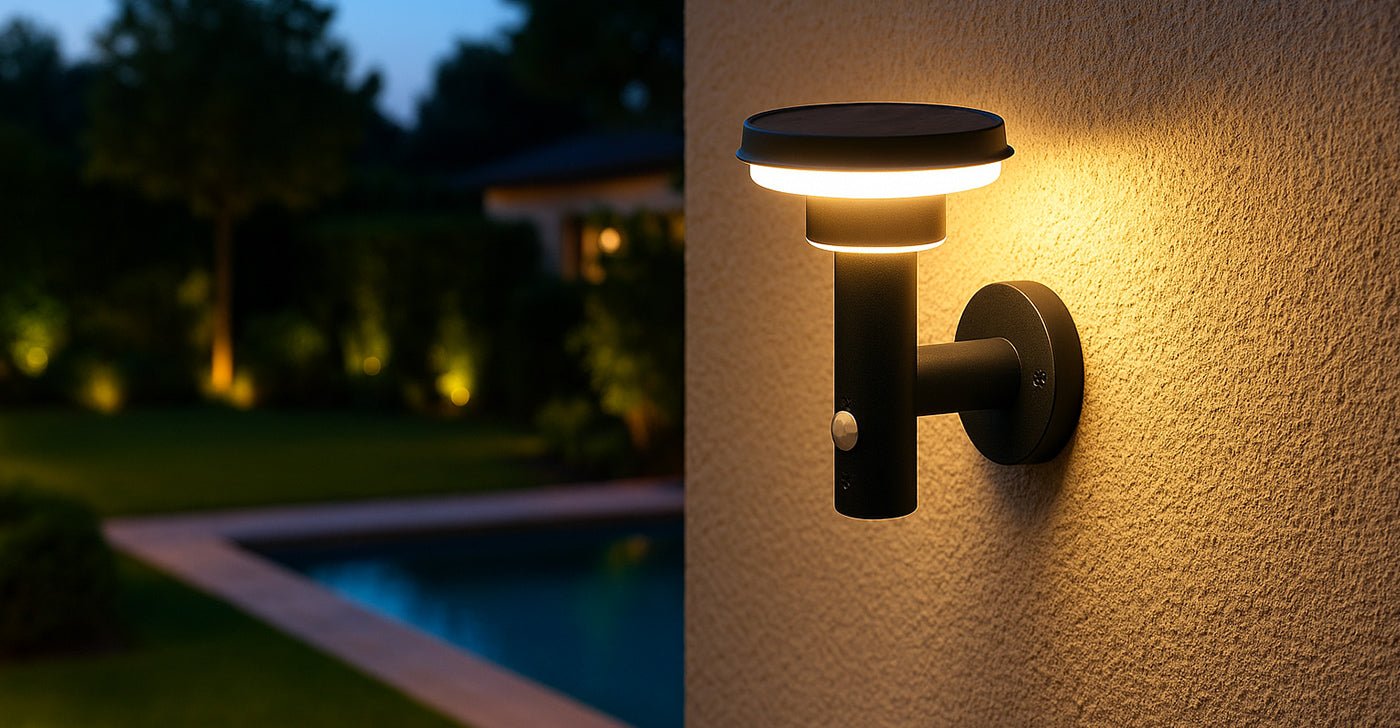How does a solar lamp really work?
A solar lamp is a bit like a magic wand: you plant it in the garden, it lights up by itself when night falls, and it doesn't need anything.
... But no.
Behind this apparent simplicity lies a system that is more subtle than you might think.
Solar collectors, batteries, LEDs: to keep them working well for a long timeeverything has to be well thought out - and well assembled.
At Lumihome, we see our products as complete systemsnot just lighting gadgets.
Here's what you really need to know to understand how a solar lamp works... and to make the right choice.

The solar collector: the heart of the system
A solar lamp captures light, not heat
First myth to dispel: a solar lamp doesn't "work better in hot weather".
It works when there is light. And it's not the same.
The photovoltaic cell captures photons. And the higher the light intensity, the faster and more complete the charge. But in the shade, under grey skies, or in winter? Efficiency drops. It's mechanical.
"A solar lamp is like a mini photovoltaic power station. But if you plant it in the shade, it won't work miracles.
(Christophe Coelho, founder of Lumihome)"
Fixed or adjustable? What it really changes
At Lumihome, the majority of our lamps are equipped with fixed panels. Why? Because they're sized and oriented to capture enough light under standard conditions (south-facing, unobstructed).
But for complex installations (covered terraces, north walls, heavily shaded areas), we recommend a remote, adjustable panel.

To discover:
The battery: the energy reservoir
Not all solar batteries are created equal
Depending on the model, solar lamps are equipped with NiMH or Lithium-ion batteries.
And as with a smartphone or an electric bike, battery capacity, quality and electronic management make all the difference.
All too often, we find products on the market with undersized batteries (below 800 mAh)... that don't last a full night.
Another point to know: cold directly impacts the performance of a solar battery. A poorly designed lamp will lose autonomy as soon as temperatures drop.
"It's often the battery that fails before the rest. If it's sealed and non-replaceable, we throw everything away. That's ecological nonsense. That's why, at Lumihome, our batteries can easily be replaced!"
Replaceable battery: essential for long life
Some lamps have no possibility of opening or replacing the battery. As a result, when the battery weakens (which will inevitably happen after 2 or 3 years), the lamp becomes unusable.
At Lumihome, our models are designed to enable easy battery replacementwith standard, accessible components.
A technical choice, but also an ecological one.

LEDs: light at the end of the chain
Not all LEDs are created equal
Yes, LEDs consume very little energy.
But it has to be a good good LEDwith good luminous efficacy, a suitable color temperature (warm or cool white), and controlled controlled diffusion.
A poorly positioned or low-quality LED can emit a blinding but ineffective light.
"You can do very bright with very little energy... if the LED is well chosen, well powered and well directed."
At Lumihome, we choose LEDs that are powerful yet economical, and above all optimized in terms of flux and angleso that every lumen is useful.
It's all about balance
This is perhaps the most important point: it's not the LED alone, nor the battery alone, nor the panel alone that makes a good lamp.
It's the balance between the three.
An oversized panel with a small battery? Wasteful.
Too much power from a low-battery LED? Premature switch-off.
A good product is a coherent systemdesigned as a whole.

And what about the detector?
It's the bonus element... but it changes everything.
A motion detector allows the lamp to come on only when it's really needed.
This triples autonomy compared with continuous ignition mode.
At Lumihome, several models feature a precise, adjustable precise, adjustable PIR sensorwith a range designed for outdoor use.
"The detector is an obvious choice when it comes to safety and passageways. It extends autonomy and avoids wasting energy unnecessarily."
To discover:
A solar lamp is not a gadget. It's a system.
What is mistakenly called a "small solar lamp" is in fact a complete complete device.
Panel, battery, LED, sensor : everything is connected. And everything has to be well designed for the product to really perform.
At Lumihome, we don't choose at random.
We size, test and adjust. Because a solar lamp really really light up. And above all: last.





























